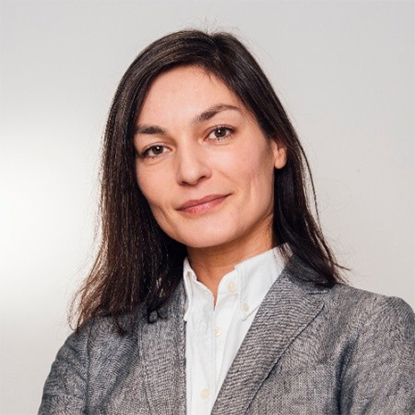-
![Porträtbild von Prof. Leopoldo Molina-Luna]() Picture: Cruz Garcia
Picture: Cruz Garcia![Porträtbild von Prof. Leopoldo Molina-Luna]() Picture: Cruz Garcia
Picture: Cruz GarciaFirst TU researcher with four ERC grants
2024/07/11
Machine learning for electron microscopy: Leopoldo Molina-Luna receives EU funding
Leopoldo Molina-Luna, Professor of Electron Microscopy at TU Darmstadt, is the first TU researcher to receive funding from the European Research Council (ERC) for the fourth time. Following Starting and Consolidator Grants, Molina-Luna is now receiving a Proof of Concept Grant. The new project “BED-TEM”, which is receiving 150,000 euros of funding for 18 months, aims to make methods of machine learning accessible for use in electron microscopy in a user-friendly manner. In doing so, it should help to optimise the design of experiments.
-
![]() Picture: NASA/Sharon Morsink/Devarshi Choudhury et al.
Picture: NASA/Sharon Morsink/Devarshi Choudhury et al.![]() Picture: NASA/Sharon Morsink/Devarshi Choudhury et al.
Picture: NASA/Sharon Morsink/Devarshi Choudhury et al.Radius of neutron star PSR J0437-4715 determined
2024/07/11
Millisecond pulsars are rotating neutron stars that emit regular electromagnetic signals, similar to lighthouses. The pulsar PSR J0437-4715 is the closest to Earth and thus the brightest. Researchers with the participation of TU Darmstadt have now gained new insights into the neutron star’s radius and its consequences for the equation of state of dense matter. The results are published in a series of papers in the renowned journal “The Astrophysical Journal Letters”.
-
![]() Picture: ESA
Picture: ESA![]() Picture: ESA
Picture: ESANew phase in neutron stars
2024/07/08
TU research team publication in renowned journal “Physical Review Letters”
Neutron stars are extreme objects whose inner matter can take on exotic forms. Researchers at TU Darmstadt and the University of Copenhagen have now been able to predict a new phase that favours “nuclear pasta”.
-
![]() Picture: Adobe Stock / akromin (Generiert mit KI) / TU Darmstadt
Picture: Adobe Stock / akromin (Generiert mit KI) / TU Darmstadt![]() Picture: Adobe Stock / akromin (Generiert mit KI) / TU Darmstadt
Picture: Adobe Stock / akromin (Generiert mit KI) / TU DarmstadtUnderstanding the interior of atomic nuclei
2024/06/26
Publication by TU researchers in the renowned journal “Physical Review Letters”
Atomic nuclei can be tiny magnets. Their magnetic moment can be precisely measured, but the corresponding calculations have been deficient until now. Physicists from TU Darmstadt have now solved this problem, as they report in the journal “Physical Review Letters”.
-
![Ein aufgeschlagenes Buch mit Grafiken auf den Seiten]() Bild: Adobe Stock / Moixó Studio
Bild: Adobe Stock / Moixó Studio![Ein aufgeschlagenes Buch mit Grafiken auf den Seiten]() Bild: Adobe Stock / Moixó Studio
Bild: Adobe Stock / Moixó StudioInnovativ: Biomimetische Membranen 2850mal dünner als Papier
2024/06/06
Veröffentlichung in Nature
Forschende des Adolphe-Merkle-Instituts (AMI, Université de Fribourg, Schweiz), der TU Darmstadt und weiterer internationalen Forschungsgruppen haben eine neue Methode zur Herstellung dünner, energieumwandelnder Membranen entwickelt, die die Struktur und Funktion biologischer Zellmembranen nachahmen. Diese Entdeckung könnte bedeutende Anwendungen in Bereichen haben, die von implantierbaren künstlichen elektrischen Organen bis zur Wasserentsalzung reichen.
-
![]()
![]()
FLOW FOR LIFE Minisymposium on Biomaterials & Tissue Engineering
2024/05/27
Wednesday July 3rd, 2024 at Georg-Christoph-Lichtenberg-Haus TU Darmstadt
-
![Patrik Schach (l.) und Enno Giese stehen vor einer Schultafel]() Picture: Christian Karres
Picture: Christian Karres![Patrik Schach (l.) und Enno Giese stehen vor einer Schultafel]() Picture: Christian Karres
Picture: Christian KarresWhat is “time” for quantum particles?
2024/05/16
Publication by TU Darmstadt researchers in renowned journal “Science Advances”
In an amazing phenomenon of quantum physics known as tunneling, particles appear to move faster than the speed of light. However, physicists from Darmstadt believe that the time it takes for particles to tunnel has been measured incorrectly until now. They propose a new method to stop the speed of quantum particles.
-
![GRK-Doktorandin Mozhdeh Fahtidoost bei der Arbeit an Computersimulationen.]() Picture: GRK 2561 MatComComMat
Picture: GRK 2561 MatComComMat![GRK-Doktorandin Mozhdeh Fahtidoost bei der Arbeit an Computersimulationen.]() Picture: GRK 2561 MatComComMat
Picture: GRK 2561 MatComComMatSaving energy with heat-resistant materials
2024/05/10
The DFG extends the “MatComComMat” Research Training Group
The German Research Foundation (DFG) has announced that it will fund the “MatComComMat” Research Training Group (GRK), in which TU Darmstadt is participating, for a further four and a half years. The DFG approved a budget of more than four million euros for the second funding period from 1 October 2024 to 31 March 2029.
-
![Am Tisch: Ein Mann reicht einem anderen Mann eine Arbeitsblatt mit Diagrammen darauf]() Picture: Pexels/Thirdman, AG Liebchen
Picture: Pexels/Thirdman, AG Liebchen![Am Tisch: Ein Mann reicht einem anderen Mann eine Arbeitsblatt mit Diagrammen darauf]() Picture: Pexels/Thirdman, AG Liebchen
Picture: Pexels/Thirdman, AG LiebchenSmart search strategies for random targets
2024/04/02
Researchers at TU Darmstadt present new approaches to a problem of statistical physics
Whether bacteria in search of food or microrobots that automatically collect toxins or waste, again and again this is a problem in statistical physics that has not yet been clarified satisfactorily: how does an “agent” have to move in order to collect randomly distributed targets as skilfully as possible? Researchers at TU Darmstadt have now presented an approach in the renowned journal Proceedings of the National Academy of Sciences (PNAS) that can be used to systematically determine efficient search strategies. It could help to intelligently design tasks such as the search for cancer cells or environmental rehabilitations in the future.
-
![]() Bild: CC BY 4.0 DEED / Bearbeitung TU Darmstadt
Bild: CC BY 4.0 DEED / Bearbeitung TU Darmstadt![]() Bild: CC BY 4.0 DEED / Bearbeitung TU Darmstadt
Bild: CC BY 4.0 DEED / Bearbeitung TU DarmstadtMit Atomwolken die rätselhafte Dunkle Materie detektieren
2024/03/07
Publikationen in Sonderausgabe des AVS Quantum Science
Die Natur eines Großteils der Materie im Universum ist Physikern weiterhin ein Rätsel. Bisherige Versuche, sie zu detektieren, scheiterten. Nun zeigen Darmstädter Physiker, wie es mit so genannten Quantensensoren doch gelingen könnte.
Research Field M+M
Archive
Archive






















